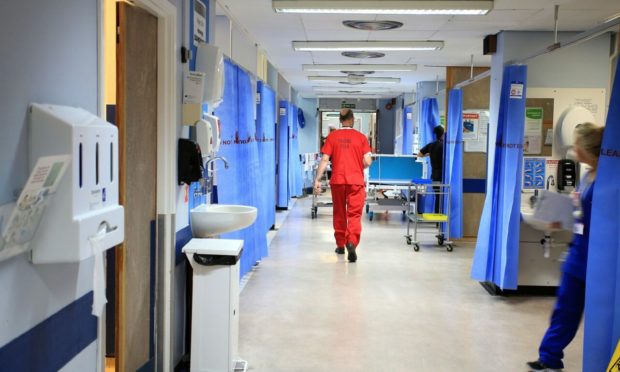Public Health Scotland is expected to release new data today revealing how many people are in hospital solely due to Covid versus how many have been admitted for another reason then happened to have tested positive.
The new statistics come the day after Scotland recorded its one millionth Covid case of entire pandemic.
This information should shine light on the spread of Covid in hospitals as well as giving an indication to the public of how dangerous the new variant really is.
A similar set of data was released by Public Health Scotland last year which showed that 68% of people at the time were being admitted to hospital because of Covid.
Speaking to BBC’s Good Morning Scotland, NHS Grampian health expert Jillian Evans explained what she is expecting to see in this year’s figures.
“What we’re looking to see in the report today is how things have changed as a result of Omicron,” she explained.
“This will vary in different parts of the country, because Omicron in Grampian for example only became the dominant variant just around Christmas time.
“It might be a bit early to take definitive results from this, but it will give us some indication about changes.”
It is thought the figures will be released by Public Health Scotland at around midday.
Peak yet to come
Ms Evans did say they are monitoring trends in patients who are in hospital because of Omicron, and that they seem to be requiring care for shorter lengths of time.
ICU admissions are relatively stable, which could be down to the combination of vaccinations and the fact that the Omicron variant seems to be less severe.
However, the health expert believes the peak of this wave of the virus is yet to come.
When asked whether yesterday’s drop in cases was an indication of a downward trend, she said: “I don’t think so yet, partly that’s because of the over-reliance of looking at case numbers. We know they’re challenged at the moment because of delays in reporting tests.
“I fully expect the rates of infection to continue to climb for a couple of weeks yet, I don’t think we’re at anything like the peak.”
Important to share new data
Ms Evans explained why the data to be revealed today is important: “The reason it’s important isn’t just for short-term planning, although that’s necessary too particularly for patient management and patient safety.”
“It’s also important for us to understand the nature of the virus and, ultimately, can we live with it?”
In parliament earlier this week, First Minister Nicola Sturgeon made the point that, regardless of why someone is in hospital, the NHS is under enormous pressure.
She warned it could be dangerous to “oversimplify” and “overstate” the issue, but Scottish Labour leader Anas Sarwar stressed the importance of sharing the data anyway.
He said: “Nobody is questioning whether having a patient with Covid impacts on hospital capacity.
“But what it does impact on is how people think about how dangerous this variant is to them, their life and loved ones.”
Changes to restrictions
Despite the high number of cases still being recorded each day, a number of Covid restrictions have been changed and eased this week.
As of today, people travelling to Scotland from abroad who are fully vaccinated or who are under the age of 18 will no longer need to take pre-departure Covid tests.
Self isolation rules have also changed, with anyone who tests positive now only needing to isolate for seven days rather than 10. This is on the condition that they don’t have a fever and record two negative lateral flow results.
There is no longer a need to confirm a positive lateral flow test with a PCR, and close contacts of positive cases don’t need to self-isolate if they are triple jabbed.
